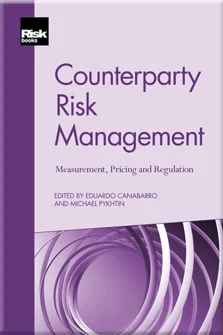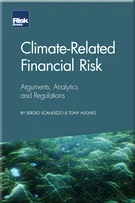The Basel III Enhancements to Counterparty Risk Capital Charges
David Lynch
The Basel III Enhancements to Counterparty Risk Capital Charges
The Regulation of Counterparty Risk in Over-the-Counter Derivatives Markets
The Non-Internal Model Method for Counterparty Credit Risk
On Credit Valuation Adjustments and Regulatory Capital
American Monte Carlo: A Practitioner Approach
Best Market Practice for Calculation and Reporting of Wrong-Way Risk
Central Counterparty Risk
CVA Risk Management Post-Crisis
Re-Thinking CVA: Valuations, Counterparty Credit Risk and Model Risk
Should Derivatives Dealers Make A Funding Value Adjustment?
Adjoint Algorithmic Differentiation: Real-Time Counterparty Credit Risk Management in Monte Carlo Simulations
Stress Test of Counterparty Risks and Dynamic Hedging of the CVA
Dynamic Stress Testing of Counterparty Default Risk
Collateral: Modelling, Pricing and Optimisation

The Basel III reforms to the international capital rules included substantial changes to the treatment of counterparty risk.11The term counterparty risk is now used here instead of counterparty credit risk. This is because of the recognition of the market risk component of counterparty risk. Most notably this risk was recognised as being both a market risk and a credit risk. This chapter describes the regulatory concerns that led to the changes in the treatment of counterparty risk and gives the rationale and background for the changes. Despite the improvement in risk capture represented by the Basel III changes, there are significant areas of ongoing work where the framework could be changed to provide better incentives to participants in the derivatives markets and a more risk-sensitive treatment.
Regulatory Concerns Regarding Counterparty Risk
The counterparty risk changes in Basel III came about because of broad concerns with over-the-counter (OTC) derivatives expressed by the official sector. For example, the Financial Crisis Inquiry Commission (FCIC) concluded that OTC derivatives contributed significantly to the 2007–9 crisis (Financial Crisis Inquiry Commission 2011)
Copyright Infopro Digital Limited. All rights reserved.
As outlined in our terms and conditions, https://www.infopro-digital.com/terms-and-conditions/subscriptions/ (point 2.4), printing is limited to a single copy.
If you would like to purchase additional rights please email info@risk.net
Copyright Infopro Digital Limited. All rights reserved.
You may share this content using our article tools. As outlined in our terms and conditions, https://www.infopro-digital.com/terms-and-conditions/subscriptions/ (clause 2.4), an Authorised User may only make one copy of the materials for their own personal use. You must also comply with the restrictions in clause 2.5.
If you would like to purchase additional rights please email info@risk.net











